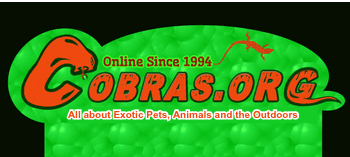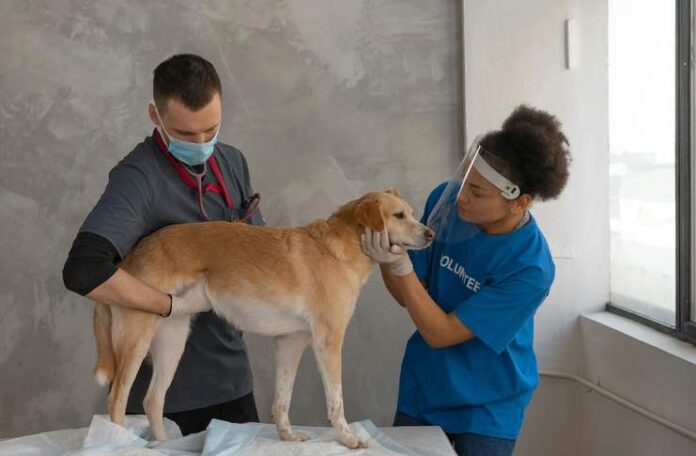In the vast and vibrant tapestry of the animal kingdom, survival and well-being are paramount. Just like in human societies, accidents and injuries can befall creatures great and small. When an animal sustains an injury or falls ill due to its role within its ecosystem, managing its medical treatment effectively is crucial for its recovery and continued contribution to its community. In this article, as part of our animal blog section, we’ll explore the parallels between managing medical treatment in a workers’ compensation case and caring for injured animals, highlighting the strategies and practices that can ensure their well-being.
Understanding the Role of Animals in Their Ecosystems
In the animal kingdom, each species has a specific role, often referred to as its “ecological niche.” For example, bees are vital pollinators, wolves regulate prey populations, and elephants maintain savanna ecosystems by uprooting trees. When an animal is injured or sick, it can disrupt these intricate ecological balances. Therefore, providing appropriate medical care is essential not only for the individual animal but also for the health of the entire ecosystem.
Identifying and Diagnosing Injuries
The first step in managing medical treatment for an injured animal is identifying and diagnosing the problem. Just as in human workers’ compensation cases, early detection and accurate diagnosis are critical. This often involves observing the animal’s behavior for signs of distress or abnormality. For instance, a bird with a broken wing might exhibit difficulty flying or perching, while a limping deer could indicate a leg injury.
Veterinarians and wildlife rehabilitators play a crucial role in diagnosing injuries in animals. They use various tools and techniques, such as X-rays, blood tests, and physical examinations, to determine the nature and extent of the injury. This diagnostic process is akin to the medical assessments conducted in human workers’ compensation cases, where accurate diagnosis is the foundation for effective treatment.
Watch this video for more:
Securing Permits and Authorizations
Rehabilitating wildlife often requires specific permits and authorizations from government agencies. These permits are essential for legally handling and treating injured animals, especially if they belong to protected species. Obtaining the necessary documentation can be a complex process, involving detailed applications and compliance with stringent criteria.
A workers’ compensation lawyer in Washington D.C. can assist in preparing and submitting these applications, ensuring that all required information is accurately provided. They can also represent rehabilitation centers in interactions with regulatory bodies, addressing any legal challenges that may arise during the permit acquisition process.
Creating a Treatment Plan
Once an injury is diagnosed, the next step is to develop a comprehensive treatment plan. In the animal kingdom, this plan must consider the specific needs and natural behaviors of the injured animal. For instance, a predator like a lion or a hawk may require a different approach to treatment than a herbivore like a rabbit or a deer.
Treatment plans often include rest, medication, and sometimes surgery. Rest is particularly crucial, as it allows the animal’s body to heal naturally. In wildlife rehabilitation centers, injured animals are often provided with quiet, stress-free environments where they can recover. This is similar to the concept of light-duty work in workers’ compensation, where injured workers are given tasks that do not exacerbate their condition.
Medication plays a significant role in treating injuries and illnesses. Pain relievers, anti-inflammatory drugs, and antibiotics are commonly used to manage pain and prevent infections. Administering these medications requires careful consideration of the animal’s size, species, and health status. Veterinarians must calculate dosages accurately to avoid adverse effects.
Rehabilitation and Physical Therapy
Rehabilitation is a critical component of medical treatment for injured animals, just as it is for injured workers. Physical therapy can help restore mobility and strength. For instance, an injured bird may need wing exercises to regain its ability to fly, while a mammal with a broken leg might require guided movements to prevent stiffness and muscle atrophy.
Wildlife rehabilitators often design specific exercises and activities to aid in the animal’s recovery. These activities mimic natural behaviors, encouraging the animal to use its injured body parts in a safe and controlled manner. For example, a turtle recovering from a shell injury might be placed in a shallow water tank where it can swim gently, promoting muscle strength without risking further injury.
Watch this video to learn more:
Monitoring Progress and Adjusting Treatment
Continuous monitoring is essential to ensure that the treatment plan is effective. Just as in workers’ compensation cases, where regular medical check-ups are necessary, veterinarians and rehabilitators must observe the animal’s progress closely. They assess factors such as pain levels, mobility, and overall health to determine if adjustments to the treatment plan are needed.
In some cases, an animal’s condition may not improve as expected, necessitating changes to the treatment approach. This could involve switching medications, modifying rehabilitation exercises, or even opting for surgical intervention if initial treatments are ineffective. Flexibility and adaptability are key to successful recovery.
Addressing Psychological Well-being
An often-overlooked aspect of medical treatment in both human and animal care is psychological well-being. Animals, like humans, can experience stress, anxiety, and depression, especially when injured or confined to unfamiliar environments. Ensuring their mental health is an integral part of the recovery process.
Providing enrichment activities and social interaction can help alleviate stress in injured animals. For social species, maintaining contact with conspecifics (members of the same species) is crucial. For solitary animals, offering toys, puzzles, and other forms of mental stimulation can prevent boredom and promote positive behaviors.
Preparing for Release or Return to Duty
The ultimate goal of medical treatment for injured animals is to enable them to return to their natural habitats or roles within their ecosystems. This is similar to helping injured workers reintegrate into the workforce. Preparing an animal for release involves several steps, including ensuring that it has regained sufficient strength and skills to survive independently.
Wildlife rehabilitators conduct “soft releases,” where animals are gradually reintroduced to their natural environments under controlled conditions. This may involve providing supplemental food and shelter initially, then gradually reducing human assistance as the animal becomes more adept at fending for itself. The success of this process is evaluated through post-release monitoring, which helps assess the animal’s adaptation and survival.
Collaboration and Education
Effective management of medical treatment for injured animals requires collaboration among various stakeholders, including veterinarians, wildlife rehabilitators, conservationists, and the public. Sharing knowledge and resources can enhance the quality of care provided to injured animals.
Public education is also vital. Raising awareness about the importance of wildlife conservation and the role of medical treatment in preserving animal populations can garner support and resources for rehabilitation efforts. Educational programs can teach people how to respond to injured animals they encounter and encourage responsible behaviors that minimize harm to wildlife.
Conclusion
Managing medical treatment in a workers’ compensation case within the animal kingdom involves a multifaceted approach that parallels human medical care. From accurate diagnosis and tailored treatment plans to rehabilitation and psychological well-being, each step is crucial for the successful recovery and reintegration of injured animals. By applying these principles, we can ensure the health and vitality of the creatures that play indispensable roles in maintaining the balance of our natural world.

Marie Miguel has been a writing and research expert for nearly a decade, covering a variety of health-related topics. Currently, she is contributing to the expansion and growth of a free online mental health resource with Mind-Diagnostics.org. With an interest and dedication to addressing stigmas associated with mental health, she continues to specifically target subjects related to anxiety and depression.



